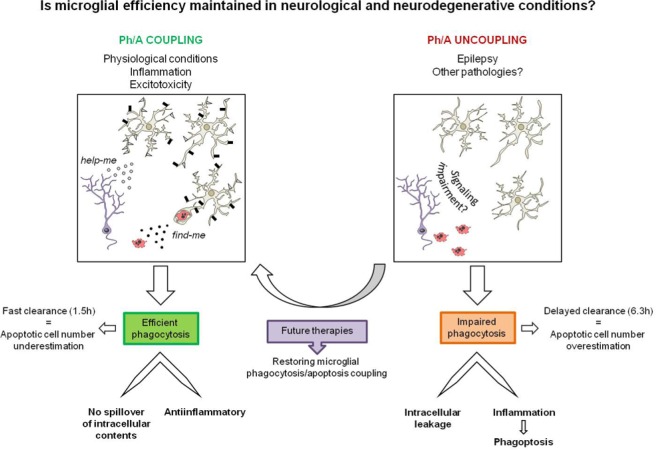Figure 2.
Microglial phagocytosis/apoptosis coupling in health and disease.
Using our novel set of parameters, we have discovered a widespread microglial response to apoptotic challenge that occurs in physiological and some pathological conditions. Here, apoptosis and microglial phagocytosis are tightly coupled thanks to a complex signaling machinery such as “find-me” and “help-me” signals between neurons and microglia. An efficient phagocytosis prevents the spillover of toxic intracellular content of apoptotic cells and is also antiinflammatory, thus maintaining tissue homeostasis. In these conditions, a fast clearance of apoptotic cells leads to a low probability of detection and therefore an underestimation of their total numbers. In contrast, microglial phagocytosis is impaired in mouse and human epilepsy and possibly in other neurodegenerative and neurological disorders. The impairment in phagocytosis results in delayed clearance of apoptotic cells and intracellular leakage, and contributes to the development of an inflammatory response, which may initiate further engulfment of healthy cells (phagoptosis). In uncoupling conditions, a slow clearance of apoptotic cells may be interpreted as de novo apoptosis rather than accumulation of non phagocytosed cells, and ultimately lead to an overestimation of their total numbers. Therefore, our findings point towards enhancing microglial phagocytosis as a novel therapeutic strategy to control tissue damage and inflammation, and accelerate recovery in neurodegenerative and neurological diseases.

